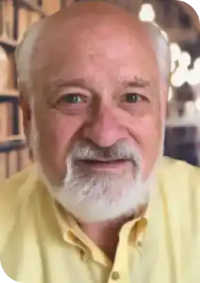The Church of the Holy Savior in Chora has one of the most important surviving examples of Byzantine sacred architecture
The Church of the Holy Savior in Chora in Istanbul, Turkey. (Photo: Wikimedia Commons)
The Turkish government has decided to turn a 12th-century Byzantine church into a mosque, a fate like that of Istanbul’s famous Hagia Sophia, says a report.
The Church of the Holy Savior in Chora, known as the Chora Church, has been functioning as a museum over the past 79 years and will be used to host Islamic prayers and rites from Feb. 23, Fides news service reported on Feb. 9.
The church is known worldwide for its frescoes and mosaics which are hailed as one of the world’s finest examples of Byzantine art.
The frescoes which are considered one of the most important surviving examples of Byzantine sacred architecture will be covered with curtains while the building is used as a mosque.
The artwork within the church focuses on the incarnation of God.
The church is in the northwestern part of Istanbul’s Old Town, not far from the historic Byzantine Gate of Adrianople.
The existing church is part of a sixth-century monastery complex and was constructed in the 12th century. The church was later completely renovated in the early 14th century.
The gate is reportedly the place where Sultan Mehmed II of the Ottoman Empire made his triumphal entry into Constantinople after conquering it in 1453.
The church was converted into a mosque only in 1511, after which the frescoes and mosaics were covered in lime but were not destroyed.
Archaeologists and experts from the Byzantine Institute of America and the Dumbarton Oaks Center for Byzantine Studies restored and converted the building into a museum at the end of World War II in 1945.
The building was restored by archaeologists and experts and converted into a state museum in line with a government order.
In 2020, President Recep Tayyip Erdogan confirmed the Council of State’s (Turkey’s main administrative court) decision to revoke the 1945 permission to convert the church into a museum.
Robert G. Ousterhout, professor emeritus of history at the University of Pennsylvania and a specialist in Byzantine architecture had decried the move to convert the building into a mosque at the time, Italian-language publication Il Giornale Dell’arte reported in 2020.
Ousterhout had termed the move a “blatant attempt to erase Istanbul’s rich Byzantine heritage.”
“It’s a purely political maneuver, which titillates its supporters by making a mockery of the West,” Ousterhout added.
Turkish Muslim fundamentalists and nationalists had been lobbying for the conversion of the Hagia Sophia and the Chora church into mosques, arguing that their neutral status was an affront to the Ottoman caliph’s decrees prohibiting other uses, according to Il Giornale Dell’arte.
The Hagia Sophia was built in the sixth century and is also known as the Church of the Holy or Divine Wisdom, in subsequent centuries became a mosque, a museum, and a mosque again in 2020.
The Hagia Sophia cathedral was built by Emperor Justinian I on the site of two earlier churches and was the world’s largest at its dedication in 537.
Hagia Sophia remained a cathedral during the Byzantine Empire until 1453 but was converted to a mosque following the Ottoman capture of Istanbul and continued to be so for nearly five centuries.
Ataturk, the founder of modern Turkey, turned it into a museum in 1935. It was declared a World Heritage site by UNESCO in 1985.
In July 2020, the cathedral (museum) was again declared a mosque by Turkish President Recep Tayyip Erdogan amidst widespread criticism from Christian and secular leaders from across the world.
Both sites are UNESCO World Heritage Sites, which recognize them as “architectural masterpieces” of Istanbul.



Dear reader,
November begins with the Feast of All Saints. That month in 2023 marked the beginning of a new UCA News series, Saints of the New Millennium, profiling some of Asia’s saints, “ordinary” people who try to live faithfully amid the demands of life in our time.
Perhaps the closest they will ever come to fame will be in your reading about them in UCA News. But they
are saints for today. Let their example challenge and encourage you to live your own sainthood.
Your contribution will help us present more such features and make a difference in society by being independent and objective.
A small donation of US$5 a month would make a big difference in our quest to achieve our goals.

William J. Grimm
Publisher
UCA News
Latest News
Credit: Source link






